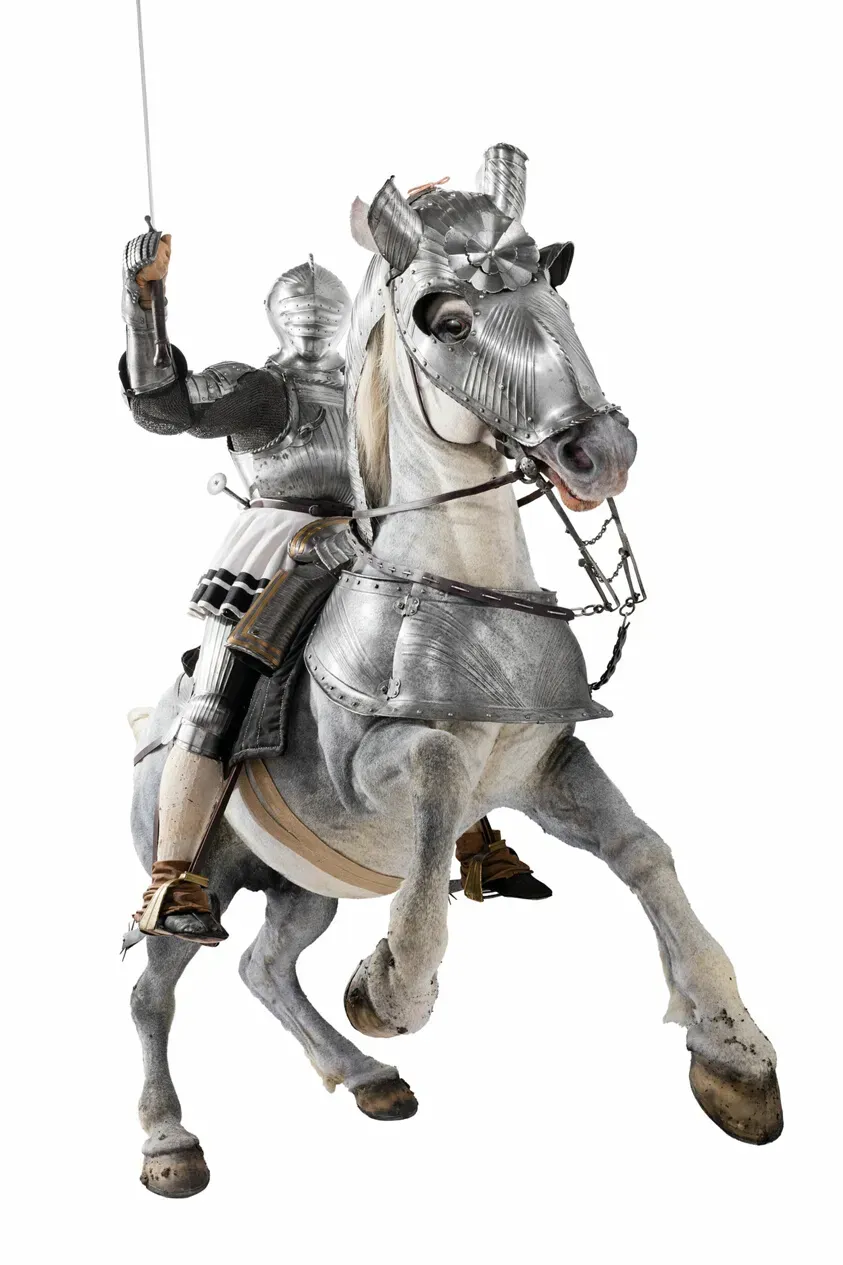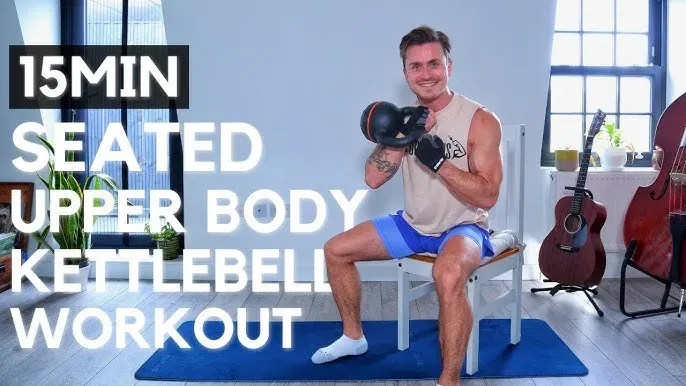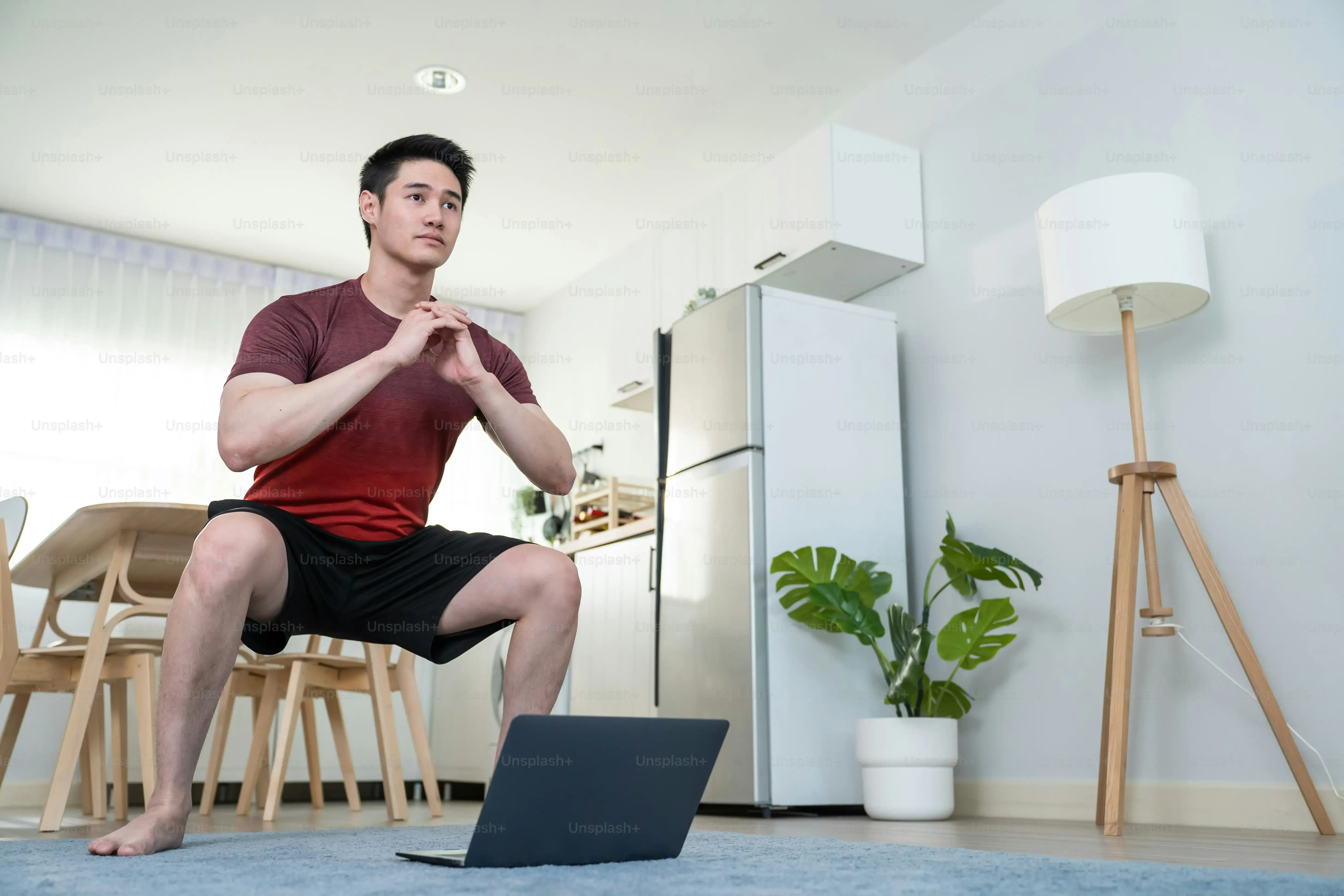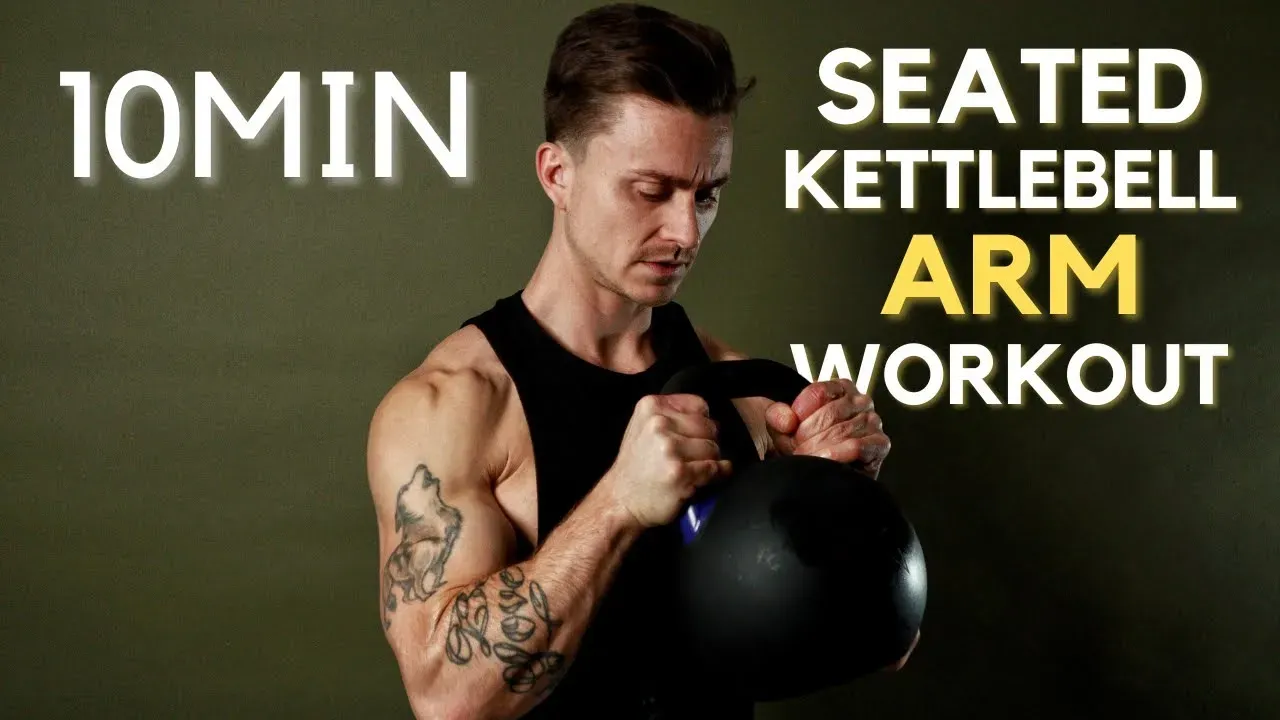Table of Contents
Stuck at a desk? Dealing with a lower-body issue that makes standing exercises a pain? Maybe you just want to switch things up from your usual routine. Whatever the reason, getting a solid arm workout doesn't always require being on your feet or having access to a full gym. Sometimes, the most effective approach is the one you might not expect.
Why Try a Kettlebell Arm Workout Sitting?

Why Try a Kettlebell Arm Workout Sitting?
Accessibility and Injury Management
Let's be honest, life happens. Maybe you're recovering from a knee injury, your lower back is screaming after a long day, or perhaps you're just plain tired of standing. A kettlebell arm workout sitting down offers a fantastic alternative. It completely takes the lower body out of the equation, or at least minimizes its role significantly. This isn't just about convenience; it's a practical way to maintain upper body strength and keep moving when traditional standing exercises are off the table. It allows you to target your biceps, triceps, shoulders, and even grip strength without stressing joints like ankles, knees, or hips. Think of it as smart training, adapting to your current physical state rather than forcing your body into uncomfortable or potentially harmful positions.
Enhanced Core Stability and Isolation
Sitting down might seem like you're slacking, but a proper kettlebell arm workout sitting actually demands more from your core in a different way. Without the ability to use your legs for momentum or balance, your abdominal and back muscles have to work harder to stabilize your torso, especially during overhead presses or rows. This forced stability means you can often achieve better isolation of the target arm muscles. You can't cheat by driving through your legs. Every ounce of effort comes directly from the muscles you're trying to work. It forces a stricter form and can highlight imbalances you might not notice when standing. Plus, it’s a solid way to sneak in some core work while you're hammering your arms.
- Reduced lower body stress
- Increased core engagement for stability
- Improved muscle isolation
- Great option for limited mobility or injuries
- Allows focus purely on upper body mechanics
Essential Moves for Your Kettlebell Arm Workout Sitting

Essential Moves for Your Kettlebell Arm Workout Sitting
Alright, so you're sold on the idea of a kettlebell arm workout sitting down. Great. Now, what do you actually *do* with that oddly shaped weight while parked on your posterior? Forget fancy footwork; this is about focused upper-body action. We're talking about hitting those biceps, triceps, shoulders, and even getting some back and core work in. The beauty is, many standard kettlebell moves translate perfectly to a seated position, sometimes even better because you can't rely on momentum. Think overhead presses to build shoulder strength, bicep curls for those guns, triceps extensions to work the back of the arm, upright rows for the traps and shoulders, and even oblique twists for core stability while holding the weight. It's a straightforward lineup designed to challenge your arms effectively from a stable base.
Dialing In Form: Tips for a Kettlebell Arm Workout Sitting
Nailing Your Posture and Control
Alright, so you're sitting down with your kettlebell, ready to get after those arms. But before you start swinging or pressing, let's talk posture. This is crucial for any kettlebell arm workout sitting. Slouching is a no-go. You need to sit tall, almost like a puppet with a string pulling you up from the crown of your head. Your back should be straight, shoulders pulled slightly back and down, not hunched up near your ears. Planting your feet flat on the floor gives you a stable base, even though your legs aren't actively lifting the weight. This engaged posture isn't just about looking good; it protects your spine and allows your core to do its job stabilizing you. Focus on controlled movements; the kettlebell should move with intention, not momentum, especially during a kettlebell arm workout sitting. Think about the muscle you're trying to work contracting and extending through the full range of motion.
Structuring Your Seated Strength Session

Structuring Your Seated Strength Session
Planning Your Seated Workout Flow
you've got the moves down and you're focused on form for your kettlebell arm workout sitting. Now, how do you put it all together into a session that actually builds strength and doesn't just feel like random lifting? Structuring Your Seated Strength Session is key to seeing real progress. Think of it like building something – you need a plan. Start with a quick warm-up, maybe some arm circles, shoulder rolls, and light twists while seated to get the blood flowing. Then, move into your main exercises. A good approach is to alternate between pushing and pulling movements to give opposing muscle groups a break. For instance, do a set of overhead presses, rest, then do a set of rows. Decide on your sets and reps – typically 3 sets of 10-15 repetitions per exercise is a solid starting point, but adjust based on your weight and goals. Keep rest periods concise, around 30-60 seconds, to keep the intensity up. Finish with a brief cool-down stretch for the arms and shoulders. Sticking to a structure helps ensure you hit all the target muscles effectively and consistently over time.
Beyond the Basics: Progressing Your Kettlebell Arm Workout Sitting

Beyond the Basics: Progressing Your Kettlebell Arm Workout Sitting
Increasing the Load and Volume
So, you've been doing your kettlebell arm workout sitting for a while now, the initial weight feels manageable, and you're cruising through the reps. That's great, but if you want to keep seeing results, you can't stay comfortable forever. The most straightforward way to progress is to make the exercise harder. This usually means picking up a heavier kettlebell. It sounds simple, but it requires honest assessment. Don't jump five sizes up and sacrifice form; a small increase can be plenty. Another method is increasing the volume. Add more repetitions to each set or add an extra set to each exercise. If you were doing 3 sets of 10-12, try 3 sets of 15, or even 4 sets of 10. Alternatively, you can shave down the rest periods between sets. Cutting 30 seconds off your rest forces your muscles to recover faster and work under fatigue, building endurance alongside strength. It's about applying progressive overload – consistently challenging your muscles more than they're used to.
Adding Complexity and Time Under Tension
Once you've maxed out the weight you can lift with good form or simply want a different challenge, start thinking about complexity and how long the muscle is working during each rep. Tempo training is a brutal but effective way to do this. Instead of just lifting and lowering, control the speed. Maybe take 3 seconds to lower the weight during a triceps extension, pause briefly at the bottom, then explode up. This increases time under tension, forcing the muscle to work harder throughout the entire range of motion. Unilateral work, like doing single-arm presses or rows, is already part of a kettlebell arm workout sitting, but you can increase the focus here. Pay extra attention to preventing your body from leaning or twisting, forcing your core to stabilize even more. Sometimes, just slowing everything down and focusing on the muscle connection makes a familiar weight feel heavy again.
Here are a few ways to make your seated arm workout harder:
- Use a heavier kettlebell.
- Increase the number of repetitions per set.
- Add more sets to each exercise.
- Decrease the rest time between sets.
- Slow down the tempo of each rep (e.g., 3 seconds down, pause, 1 second up).
- Focus intensely on unilateral movements, preventing any torso movement.
- Combine movements if safe and controlled (e.g., a press with a slight lean for oblique engagement, use caution).
Seated Strength: A Practical Path
So there you have it. A kettlebell arm workout sitting isn't just a workaround for limitations; it's a legitimate method to build upper-body strength and endurance. By focusing on controlled movements and proper form from a stable seated position, you can effectively target your biceps, triceps, shoulders, and even your core without putting unnecessary strain on your lower body. It's a practical approach for anyone, anywhere, proving that you don't need to be standing or have fancy equipment to make real gains. Grab a kettlebell, find a sturdy seat, and get to work.